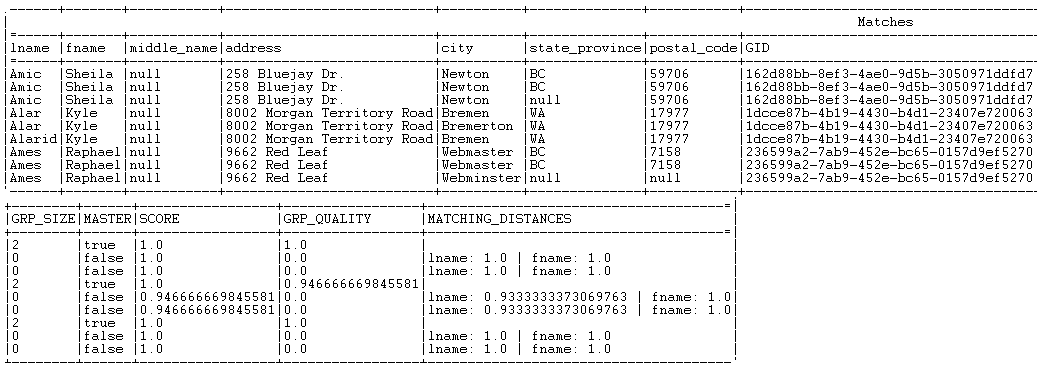Finalizing the Job and executing it
Procedure
- Double-click each tLogRow component to display the Basic settings view.
- Select Table (print values in cells of a table).
- Save your Job and press F6 to execute it.
Results
You can see that records are grouped together in three different groups. Each record is listed in one of the three groups according to the value of the group score which is the minimal distance computed in the group.
The identifier for each group, which is of String data type, is listed in the GID column next to the corresponding record. This identifier is of the data type Long for Jobs that are migrated from older releases. To have the group identifier as String, replace the tMatchGroup component in the imported Job with tMatchGroup from the Talend Studio Palette.
The number of records in each of the three output blocks is listed in the GRP_SIZE column and computed only on the master record. The MASTER column indicates with true or false whether the corresponding record is a master record or not. The SCORE column lists the calculated distance between the input record and the master record according to the Jaro-Winkler and Jaro matching algorithms.
The Job evaluates the records against the first rule and the records that match are not evaluated against the second rule.
All records with a group score between the match interval, 0.95 or 0.85 depending on the applied rule, and the confidence threshold defined in the advanced settings of tMatchGroup are listed in the Suspects output flow.

All records with a group score greater than or equal to one of the match probabilities are listed in the Matches output flow.

All records with a group size equal to 1 is listed in the Uniques output flow.

For another scenario that groups the output records in one single output flow based on a generated functional key, see Comparing columns and grouping in the output flow duplicate records that have the same functional key in Identification section.
Did this page help you?
If you find any issues with this page or its content – a typo, a missing step, or a technical error – let us know how we can improve!
